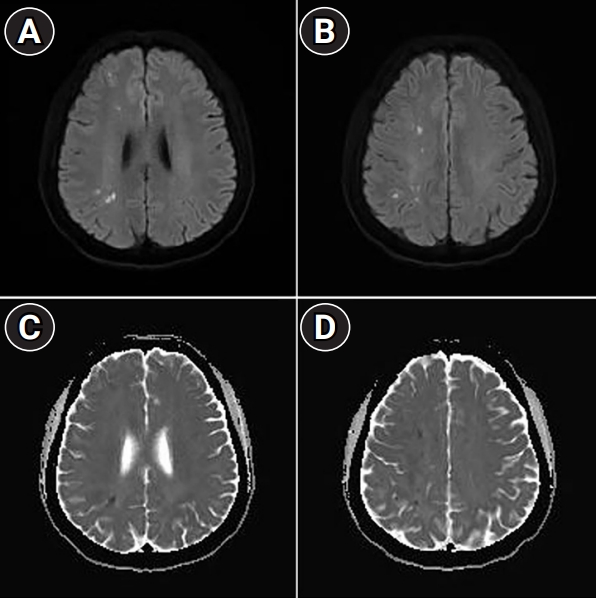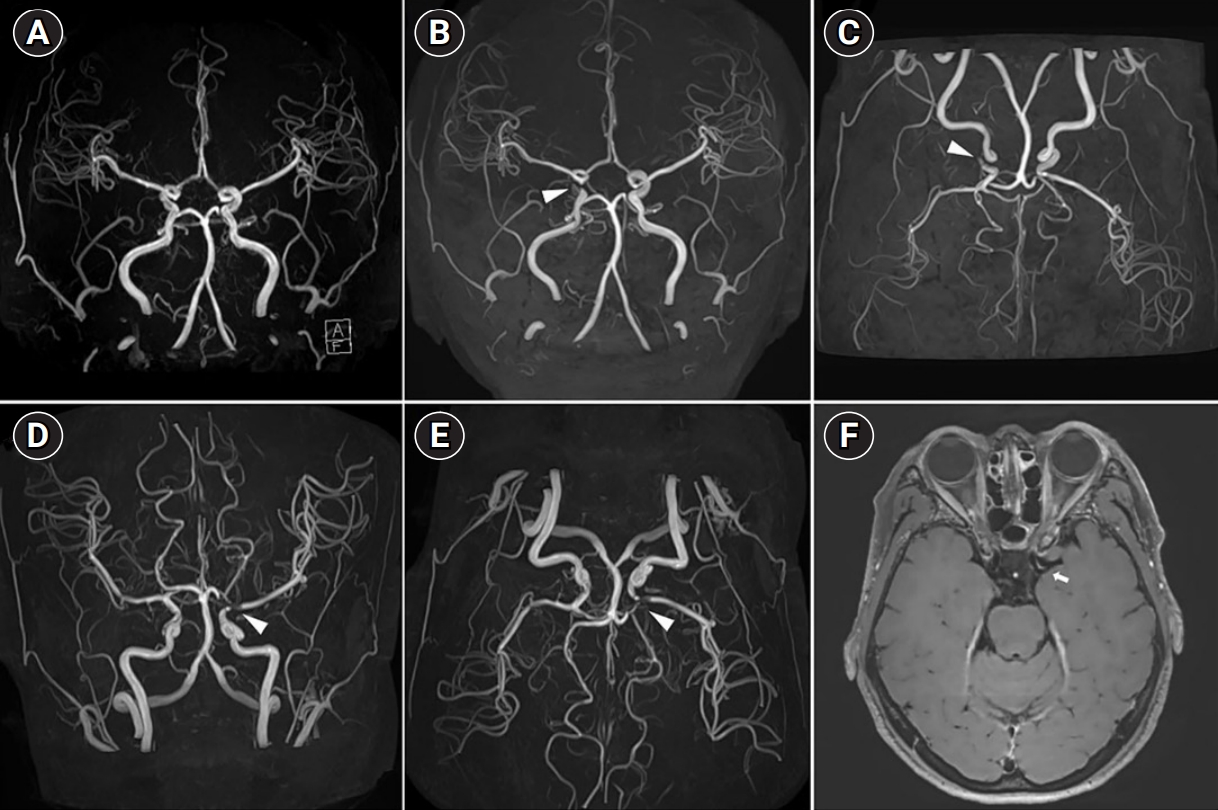Extraglandular involvement in Sjögren's syndrome (SS) can manifest in the central or peripheral nervous system. Changes in major cerebral vessels in SS are rarely reported [1,2]. Pathomechanisms in SS are known to be mainly associated with small- or medium-sized vasculopathy [1,3]. A 59-year-old woman who presented with left transient hemiparesis a few days prior was diagnosed with SS with dry mouth. Anti-SS-related antigen A (SSA/Ro) and B (SSB/La) had shown strong positivity on previous evaluations. Brain magnetic resonance imaging (MRI) showed multiple diffusion-restricted lesions in the right middle cerebral artery border zone area, suggesting acute infarctions (Fig. 1). Magnetic resonance angiography (MRA) upon admission showed moderate-to-severe stenosis of the right distal internal carotid artery (ICA) (Fig. 2). The patient reported transient right hemi hypesthesia following admission. On MR carotid plaque imaging performed 4 days later, there was focal concentric wall thickening with enhancement in the right distal ICA stenosis at the location of the lesion shown on the previous MRA. Additionally, concentric wall thickening with enhancement was observed in the left distal ICA (Fig. 2). Bilateral distal ICA stenosis with wall thickening and enhancement occurred consecutively. Therefore, it was likely caused by vasculitic stenosis associated with SS.
This report showed that a patient with high disease activity developed severe vasculitic stenosis that occurred consecutively within a few days. A high-resolution MRI of the carotid plaque indicated the presence of vasculitis with large-artery involvement, which could be helpful when considering the pathology.







